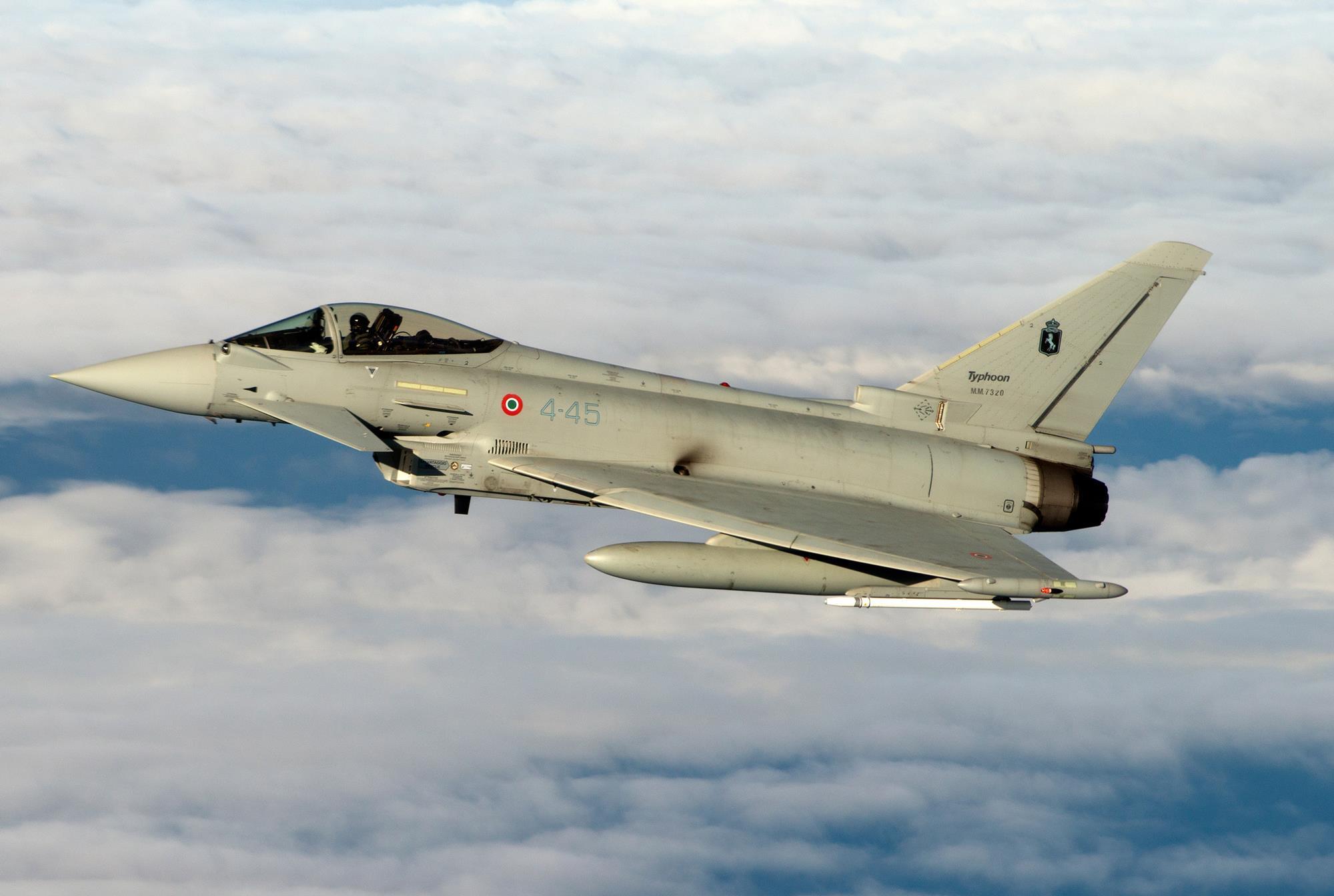The North Atlantic Treaty Organization’s (NATO) sole capable combat aircraft that can match Russian fighter jets and present a worthy challenge to one of the most powerful air forces in the world, the Eurofighter Typhoon, has been busy.
For the last few weeks, as the war in Ukraine rages and Russia’s relations with the United States (US) and Europe go from bad to worse, Russian fighter jets have repeatedly flown over the Baltic Sea.
With just eight ‘Alpha Scrambles’ (alert departures) in the week before October 10 and a total of 16 in the last two months, Italian Air Force (ItAF) Eurofighter Typhoons have intercepted and escorted Russian Air Forces (RuAF) Sukhoi Su-30, Su-27, Su-24M and even Illyusin Il-20 spy planes.
This is according to a report in the leading aviation news portal, The Aviationist. The ItAF (or Aeronautica Militaire) have been a part of NATO’s enhanced Air Policing Mission (eAPM) in Poland since July 28 this year and were stationed in Romania under the eAPM-South.
Altri 2 #Scramble per gli #Eurofighter della Task Force Air “White Eagle” in #Polonia decollati per intercettare jet russi in volo nella zona del Mar Baltico. Solo in questa settimana i velivoli dell’#AeronauticaMilitare hanno effettuato 7 decolli immediati#NATO #AirPolicing pic.twitter.com/f0n5AwTmYu
— Aeronautica Militare (@ItalianAirForce) September 22, 2022
Russian Jets Keeping Testing NATO
The Task Force Air (TFA) ‘White Eagle’ also flies and trains with Poland’s Russian-origin MiG-29s and has intercepted 19 Russian combat aircraft that have been “unprecedented” there, according to TFA White Eagle commander, Col. Salvatore Florio.
“Here in Poland, the activity is intense; on the other hand, all these intrusions or approaches to the NATO airspace by Russian aircraft (is) albeit always on portions of international waters. However, we remain calm because we are prepared to do our job. And morale is high,” Florio said.
In Poland, the ItAF has flown twice a day and over 250 hours directly over Polish skies, of which 40 have been actual, real interceptions of Russian aircraft over international waters within the boundaries of the Polish airspace.
The four single-seater Typhoons deployed by ItAF are designated F-20000A and have been pooled from the 4th, 36th, 37th, and 51st Stormo (Wing).

They are supported when needed by the KC-767A air-to-air refueling tanker and transport aircraft and G550 Conformal Airborne Early Warning (CAEW) planes.
“Their role is to strengthen the deterrence posture on the north-eastern flank of NATO airspace as well as to ensure the integrity and security of the Polish airspace and of all the countries of the Alliance, while maintaining a strategic flexibility to intervene in other areas quickly, should the need arise,” the report by David Cenciotti added.
The intrusions and interceptions seem to be a mere show of force, based on the fact that such run-ins with NATO aircraft over northern Europe have been common for over a decade. Florio later said, “Sometimes the Russians are more cooperative; in other cases, they are less, but we are careful and try to avoid any misunderstanding and de-escalate the situation.” But they have increased since the war in Ukraine amidst the most sensitive geopolitical Cold War.
But the delicateness is nowhere close to the one seen during the Cold War, when NATO, the US, and Russia were always on hair-trigger alert in Europe. Both belligerents had forward-deployed assets along their entire border and were directly in a permanent state of mobilization.
Russia, Europe, and the US have said they are uninterested in fighting each other, with Russia clarifying it is only concerned with preventing Ukraine from possibly joining the military bloc.
Eurofighter Typhoon – Europe’s Best Fighter?
The situation again brings the focus back to the Typhoon’s significance as not only Europe’s but one of the world’s best fighters against Russia, especially its advanced platforms like the Su-30SM2 and Su-35.
All three are Generation 4++ fighters, and the Typhoon goes almost toe-to-toe in kinematics, electronics, avionics, radars, sensors, and weapons packages. Moreover, being originally a Gen. 4 jet, it also holds the advantage of being upgradable for the next few decades.
Co-developed by Spain, Germany, the United Kingdom, and Italy, the Eurofighter Typhoon and its competitor, the Su-35, lack an Active Electronically Scanned Array (AESA) radar.
Their nose-mounted Passive Electronically Scanned Array (PESA) Irbis-E and CAPTOR-M are roughly comparable on all levels. However, the Praetorian Defensive Aids Sub-System of Leonardo gives the Typhoon a definite advantage in passive tracking.
Moreover, Britain’s Royal Air Force (RAF) Typhoons are on their way to receive the European Common Radar System (ECRS) Mk.2 as a part of €2.35 billion upgrade program announced in July this year.
This will also include the latest mission computer, flight control, navigation, communication equipment, and, most important, an Electronic Warfare (EW) and Electronic Counter Measures (ECM) suite.
But the definitive factor has often pointed to be the Meteor beyond visual range (BVR) air-to-air missile (AAM) developed by MBDA. Its ramjet propulsion and ability to be controlled by multiple friendly assets like AEW aircraft along its entire flight path is considered unmatched and expected to take a heavy toll on Russian aircraft.
The Su-35 has a higher maximum airspeed of Mach 2.25 than the Typhoon’s Mach 2.0. The Sukhoi has an excellent combat range of 1,600 kilometers, compared to the Typhoon’s 1,389 kilometers and greater maneuverability.
- The author can be reached at satamp@gmail.com
- Follow EurAsian Times on Google News